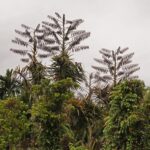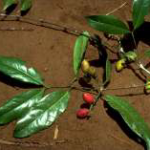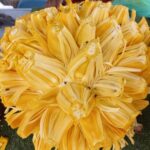Red torch ginger (Etlingera elatior) fruits are commonly eaten by Jahai Orang Asli people in the forests of the northern State of Perak in Malaysia. These fruits are not only consumed by the forest dwellers of Perak State, but also widely over Southeast Asia. They are gathered and sold on markets at least in parts of Peninsular Malaysia, and all over Borneo and the Indonesian archipelago. Due to this wide distribution, there are various common names, like Buah Kantan, Buah Kecombrang, Ketimba, and many other local names.
Plant description and distribution
The circumpolar distribution in tropical countries of Etlingera elatior was already presented on this website under this article.
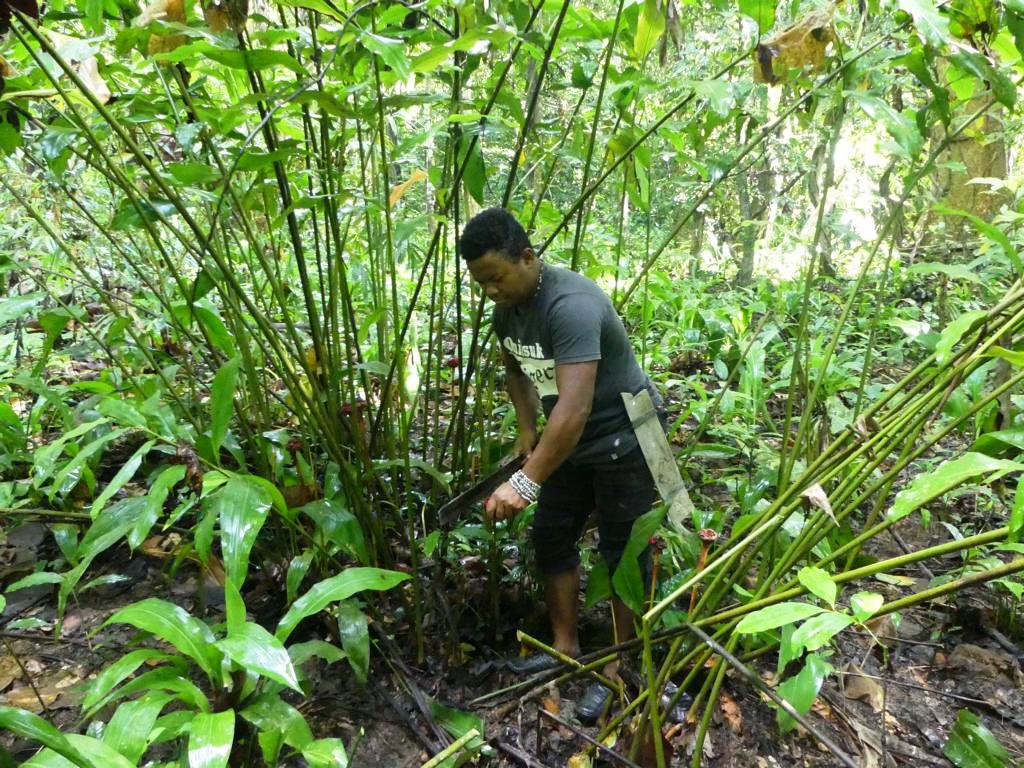
Torch ginger grows up to 23 feet (7 meters) high and forms clumps, which originate from the large rhizome, which runs shallow below the ground. From this rhizome, large pseudostems appear, with 15 – 25 leaves alternating in two rows. The bottom ones are much smaller than the leaves at the top.
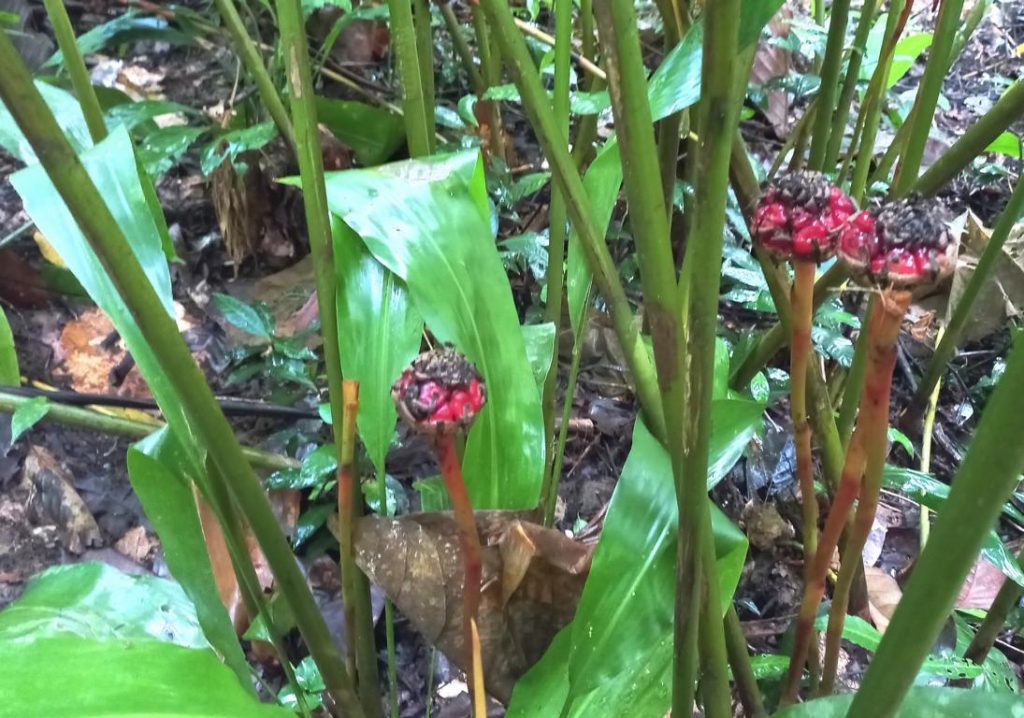
The flowers of torch ginger plants develop into the fruit, which is an agglomeration of red berries. Botanists call this fruit type ‘subglobose’. The diameter of the fruit bunch is up to 12 cm (4.7’’), and it consists of several berries. Each of these ‘berries’, which make up the fruit, contains many black seeds, which are surrounded by a translucent, white, and watery aril (gel) that tastes delightfully sweet-sour and pleasant.
Harvesting and uses
Torch ginger fruits can be harvested throughout the year. Primary season, however, is typically after the rainy season due to the abundance of water, which helps the plants thrive. The fruits (Buah Kantan) can be found in clumps of torch ginger pseudostems if the flowers (Bunga Kantan) were not collected earlier for cooking into soups.

The fruit bunch will be cut off from its stem and split into berries.
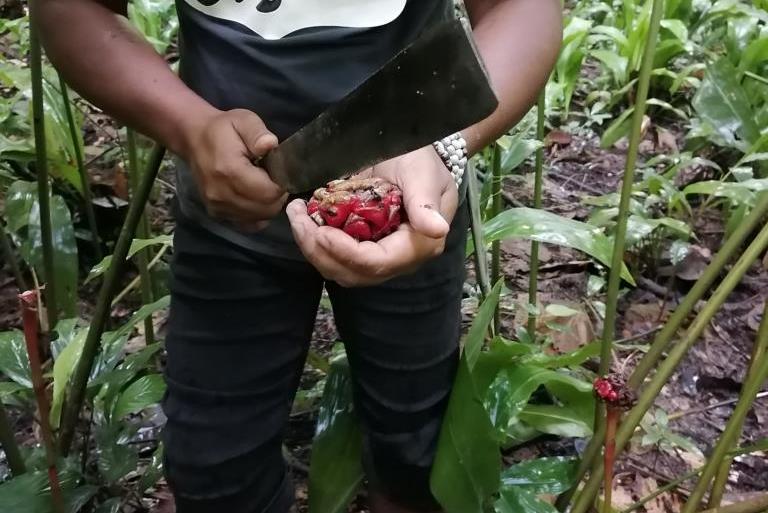
Individual berries are up to 5 cm (2’’) long and up to 2,5 cm (1’’) wide.
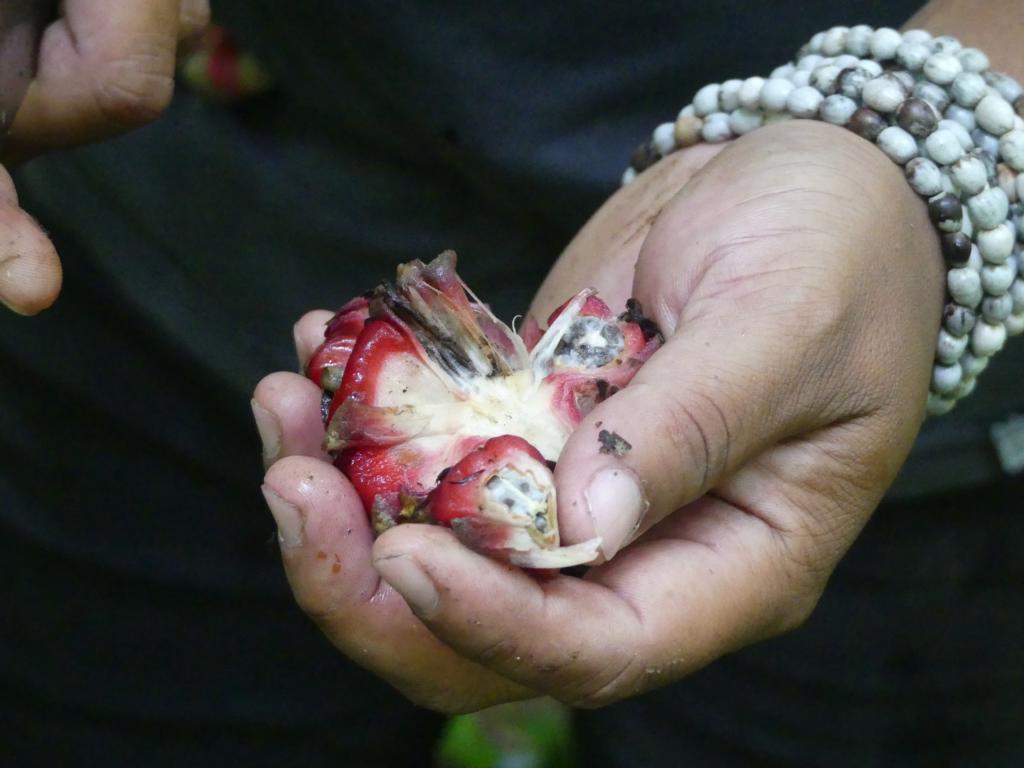
One end can be cut open, and the fruit pulp with the seeds can be sucked out.
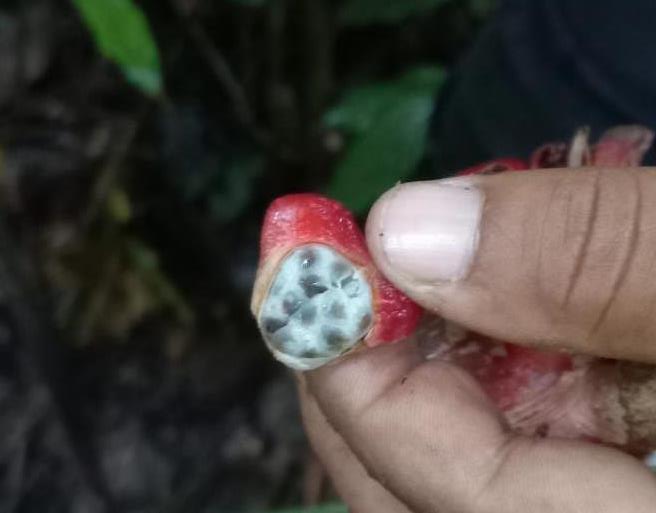
Jahai people commonly eat the fruit pulp as a refreshing snack. It will also be used as an ingredient for soups, which need an acidic and floral touch, like fish soups do.
Nutritional value of Torch ginger lily fruits
Interestingly, torch ginger fruits are not rated for their nutritional value potential in their distribution areas, but on their phytochemical characteristics. These characteristics also depend on physical size and coloration. Etlingera elatior fruit strains can come in yellow, red, or purple colors. According to Isyanti M. et al., the purple color has the smallest physical size, but the highest contents of total phenolics, total flavonoids, and antioxidant activity. Yellow-colored fruits have the lowest content of these characteristics.
In industrial applications, dark red and purple colored torch ginger fruits can be used as a natural preservative for fresh fish and fish meatballs. In a concentration of 4.5%, pulp and fruit seed powder can extend the shelf life of both items from two to four days by inhibiting the growth of Escherichia coli and Staphylococcus aureus bacteria.
Which means, in practical terms, that freshly caught fish in the forests can be preserved with this fruit pulp for up to four days! The studies of Eikel S.B.G. et al. and Nurlaili N. et al. support this thesis.
Lessons learned about torch ginger fruits:
- Ripe torch ginger fruits can be found throughout the year.
- Primary harvesting time is after the rainy season.
- Fruit bunches consist of individual berries, which contain fruit pulp and seeds.
- Pulp and seeds can be used as a natural preservative for fish and other food.
.



